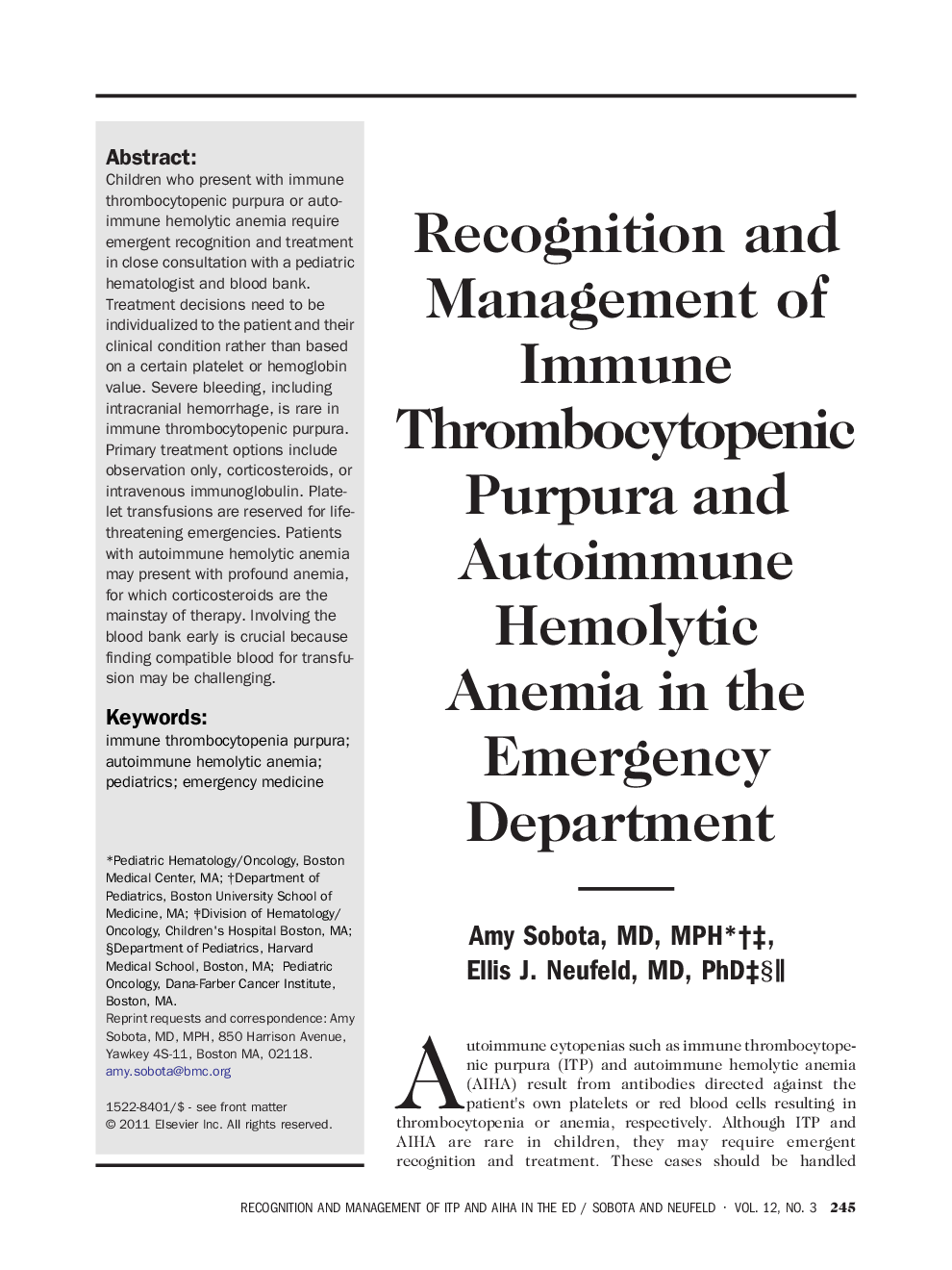| Article ID | Journal | Published Year | Pages | File Type |
|---|---|---|---|---|
| 3235865 | Clinical Pediatric Emergency Medicine | 2011 | 8 Pages |
Children who present with immune thrombocytopenic purpura or autoimmune hemolytic anemia require emergent recognition and treatment in close consultation with a pediatric hematologist and blood bank. Treatment decisions need to be individualized to the patient and their clinical condition rather than based on a certain platelet or hemoglobin value. Severe bleeding, including intracranial hemorrhage, is rare in immune thrombocytopenic purpura. Primary treatment options include observation only, corticosteroids, or intravenous immunoglobulin. Platelet transfusions are reserved for life-threatening emergencies. Patients with autoimmune hemolytic anemia may present with profound anemia, for which corticosteroids are the mainstay of therapy. Involving the blood bank early is crucial because finding compatible blood for transfusion may be challenging.
